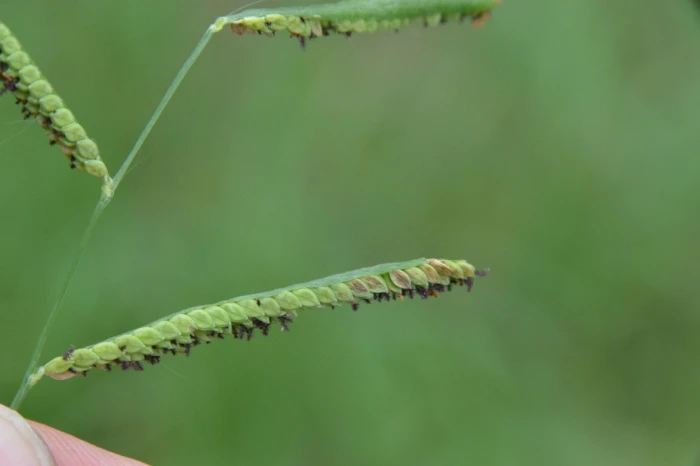Toothed Paspalum
(Paspalum denticulatum)
Toothed Paspalum (Paspalum denticulatum)
/
/

Dan Johnson
CC BY 4.0
Image By:
Dan Johnson
Recorded By:
Copyright:
CC BY 4.0
Copyright Notice:
Photo by: Dan Johnson | License Type: CC BY 4.0 | License URL: http://creativecommons.org/licenses/by/4.0/ | Rights Holder: Dan Johnson | Publisher: iNaturalist | Date Created: 2020-10-24T14:20:19-07:00 |
























Estimated Native Range
Climate Requirements for Killeen, Texas
| This Plant | Your Site | Plant Suitability for Your Location | ||
|---|---|---|---|---|
| • Precipitation | 0" - 105" | 31" | Your precipitation may be insufficient for this plant. Irrigate N" / year. | Irrigate N" / year |
| • High Temp. | 52°F - 105°F | 96°F | Your summer temperatures are normal for this plant. | Excellent |
| • Low Temp. | 11°F - 70°F | 35°F | Your winter temperatures are normal for this plant | Excellent |
This plant should grow well at your location with about N inches per year (Y minutes per month) of irrigation.
Summary
Paspalum denticulatum, commonly known as Toothed Paspalum, is a perennial grass that is deciduous in cooler climates and evergreen in warmer regions. It is native to tropical and subtropical areas of the Americas, including riverbanks, wet meadows, and other moist, open habitats. This species typically grows to a height of 1-3 feet (0.3-0.9 meters) and is characterized by its narrow leaves and toothed sheaths, which give the plant its common name. The inflorescence is a raceme, with small, inconspicuous flowers that may be present throughout the growing season in its native range.
Toothed Paspalum is valued for its ability to thrive in wet conditions and is often used for erosion control along waterways. It is also utilized in wetland restoration projects and as a forage grass in pastures. In garden settings, it can serve as a ground cover in damp areas. It requires full sun to part shade and prefers medium to slow-draining clay or loam soils, with consistent moisture. While it is not typically grown for its ornamental qualities, its dense growth habit can be beneficial in landscape design. Care should be taken as it can become invasive in some regions outside its native range, particularly in wetland areas.CC BY-SA 4.0
Toothed Paspalum is valued for its ability to thrive in wet conditions and is often used for erosion control along waterways. It is also utilized in wetland restoration projects and as a forage grass in pastures. In garden settings, it can serve as a ground cover in damp areas. It requires full sun to part shade and prefers medium to slow-draining clay or loam soils, with consistent moisture. While it is not typically grown for its ornamental qualities, its dense growth habit can be beneficial in landscape design. Care should be taken as it can become invasive in some regions outside its native range, particularly in wetland areas.CC BY-SA 4.0
Plant Description
- Plant Type: Grass
- Height: 1-3 feet
- Width: 2-3 feet
- Growth Rate: Moderate
- Flower Color: N/A
- Flowering Season: Spring, Summer, Fall
- Leaf Retention: Deciduous
Growth Requirements
- Sun: Full Sun, Part Shade
- Water: High
- Drainage: Medium, Slow
Common Uses
Erosion Control, Low Maintenance, Water Garden
Natural Habitat
Native to tropical and subtropical riverbanks, wet meadows, and moist open habitats
Other Names
Common Names:
Scientific Names: Paspalum denticulatum, Paspalum denticulatum var. denticulatum, Paspalum hieronymi, Paspalum jujuyense, Paspalum lividum, Paspalum lividum, Paspalum proliferum
GBIF Accepted Name: Paspalum denticulatum